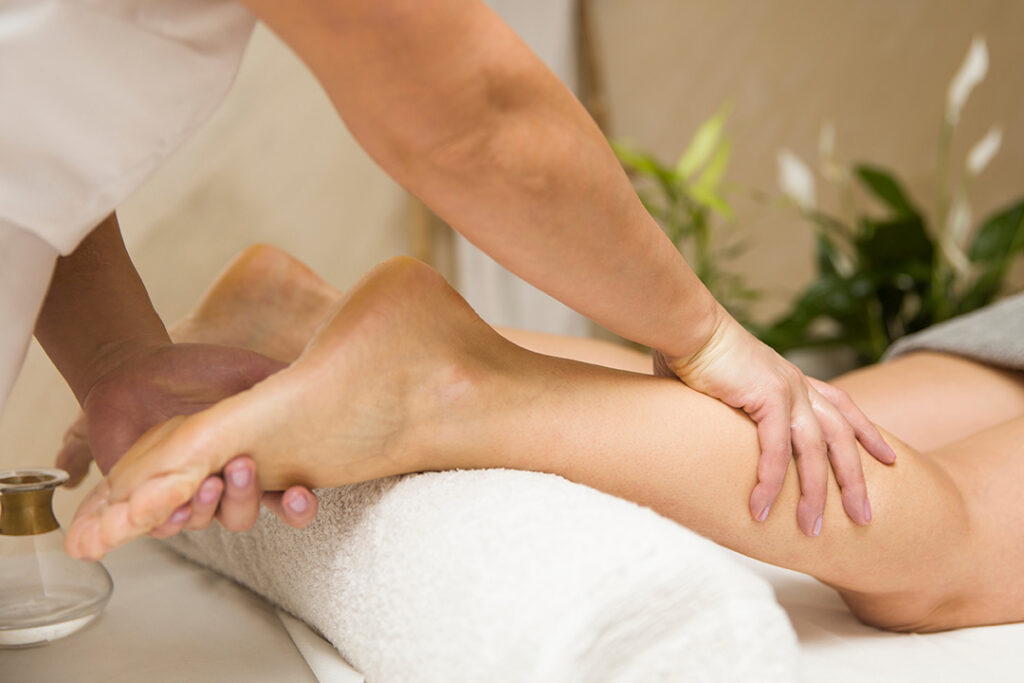Living with Peripheral Artery Disease (PAD) can be painful and frustrating. Symptoms like claudication (leg pain during exercise) or changes in skin appearance can significantly impact your quality of life.
If you’re looking for relief, a peripheral artery disease massage might be worth exploring. While it can provide soothing, temporary relief, always consult your healthcare provider and vascular specialist before starting vascular massage therapy, as it may not be suitable for everyone and could pose risks to some patients with this PAD.

Before considering massage therapy for a PAD diagnosis, it’s crucial to consult your doctor. If you are cleared to proceed, ensure your therapist is trained in massage for PAD, specifically.
Even when working with an expert, always inform them of your condition before starting a session.
Peripheral artery disease massage safety tips:
While massage is generally considered a safe, non-invasive way to manage PAD symptoms, it is not without risk. Applying too much pressure can be risky. A blood clot could loosen, leading to severe health issues.
Here are some safety tips to consider:
There is not much evidence to answer the question: Does massage help PAD?
However, studies suggest combining massage therapy with exercise training can improve blood flow in the legs, as measured by an Ankle Brachial Index (ABI) score. ABI is a non-invasive, in-office test used to diagnose peripheral artery disease.
However, since this study explored the combination of massage and exercise, and there is far more evidence highlighting the benefits of movement for peripheral arterial disease, it is difficult to answer, ‘Is massage good for peripheral artery disease?’ based on these results alone.
Massage, along with lifestyle changes, can offer relief for PAD symptoms.
Massage can provide temporary comfort. However, lasting relief often comes from making lifestyle modifications. Consider these changes to help manage symptoms of PAD:
By combining massage with these lifestyle changes, you may find both temporary and longer-lasting PAD symptom relief.
If you are seeking effective PAD treatment, there is little evidence to suggest that massage alone is good for PAD. However, specific types, like connective tissue reflex massage, have shown some benefits. One study1 revealed patients with diabetes and PAD did benefit from undergoing a 15-week series of connective tissue reflex massage treatments.
Unlike basic massage therapy, peripheral artery disease massage targets reflex lines on the skin to improve circulation.
For lasting PAD relief and disease progression prevention, consider proven medical treatments. The arterial specialists at Georgia Endovascular can provide effective treatment options like angioplasty, atherectomy, and stenting. These minimally invasive procedures offer significant benefits, minimal risks, and fast recovery times.
If you’re ready to explore effective treatment options, request a consultation with us. Our specialists are ready to help improve your quality of life.
Resources:
Connective Tissue Reflex Massage for Type 2 Diabetic Patients with PAD. Alelaida M. Castro-Sanchez, Carmen, Moreno-Lorenzo, Guillermo A. Mataran-Penarrocha, and Belen Feriche. (2011, March). Connective Tissue Reflex Massage for Type 2 Diabetic Patients with Peripheral Artery Disease: Randomized Controlled Trial.

Atlanta
3225 Cumberland Blvd. Southeast, Suite 520
Atlanta, GA 30339
Stockbridge
1035 Southcrest Dr., Suite 220 + 250
Stockbridge, GA 30281
Tucker
1975 Lakeside Pkwy., Suite 300
Tucker, GA 30084
Scheduling
Please contact our dedicated specialists to schedule a consultation today.
2025 Georgia Endovascular. All rights reserved. Website Design by Healthcare Success